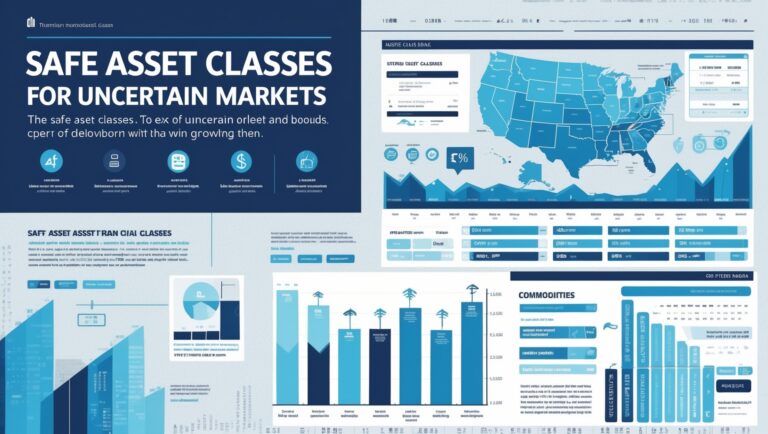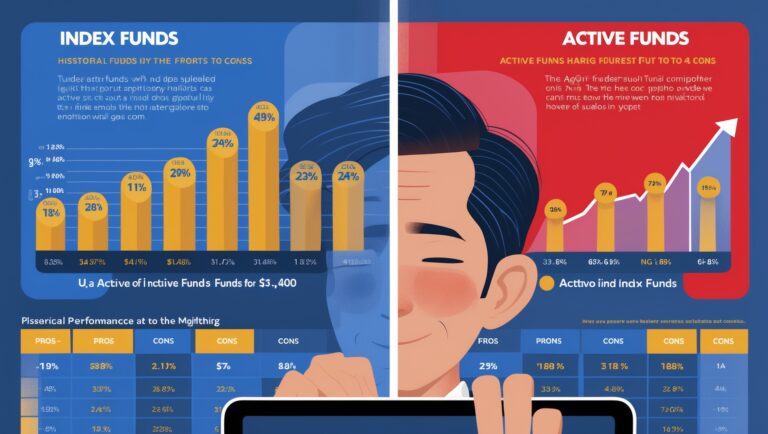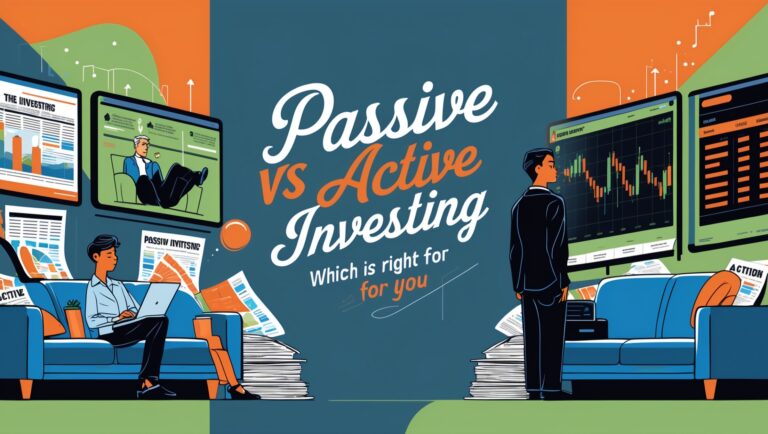How to Choose Low-Cost ETFs That Still Perform
How to Choose Low-Cost ETFs That Still Perform
Learn how to choose low-cost ETFs that still perform. I’ll share my personal strategies for picking ETFs that balance fees, growth potential, and diversification to help me build a strong portfolio.

Table of Contents
What Are ETFs?
When I first started investing, ETFs were confusing. Exchange-Traded Funds (ETFs) are collections of stocks or bonds that trade like a single stock on the market.
For me, ETFs are a simple way to diversify my portfolio without buying hundreds of individual stocks. They give me exposure to entire sectors, indices, or strategies in one trade.
Why Low-Cost ETFs Matter
I quickly learned that fees eat into long-term returns. Even a 1% higher expense ratio can significantly reduce my portfolio growth over decades.
That’s why I prioritize low-cost ETFs. By minimizing fees, I ensure that more of my money stays invested and continues to compound over time.
How I Evaluate ETF Performance
Not all low-cost ETFs are worth buying. I look at:
- Expense ratio – The lower, the better.
- Tracking error – How closely the ETF follows its index.
- Liquidity – High-volume ETFs reduce the risk of wide bid-ask spreads.
- Diversification – I prefer ETFs that spread risk across many stocks or bonds.
This process helps me avoid ETFs that look cheap but underperform or carry hidden risks.
Balancing Cost and Performance
Sometimes, a slightly higher-cost ETF may be justified if it offers better performance, lower tracking error, or superior diversification. I weigh these factors carefully to make sure I get the best value for my investment.
For me, the key is balancing low costs with consistent, reliable performance over the long term.
Sector vs. Broad Market ETFs
I also decide whether to invest in sector-specific ETFs or broad market ETFs. Broad market ETFs are my core holdings—they provide stability and diversification.
Sector ETFs are satellites in my portfolio. I only add them when I have conviction in a trend or industry, but I make sure they don’t dominate my portfolio.
Tax Efficiency
I choose ETFs that are tax-efficient, especially for taxable accounts. ETFs typically have lower turnover than mutual funds, reducing capital gains distributions and helping me keep more of my returns.
For me, tax efficiency complements low costs and performance, maximizing the impact of my investments.
Rebalancing My ETF Portfolio
I periodically rebalance my ETF holdings to maintain my target allocation. This ensures I stay diversified, minimize risk, and capture growth across different asset classes.
Rebalancing also helps me avoid overexposure to sectors or trends that may have outperformed recently.
Want My Full ETF Strategy?
If you want to see exactly how I choose low-cost ETFs and structure my portfolio for growth, I explain my system in my ebook: Pay Bills with Stocks.
I show how I select ETFs, balance costs with performance, and maintain a portfolio that grows steadily while keeping fees low.
Final Thoughts
Low-cost ETFs are an essential tool for building a diversified, high-performing portfolio. By focusing on expense ratios, tracking error, liquidity, and diversification, I can invest confidently and maximize long-term returns.
If you want to see my full step-by-step ETF strategy, check out my guide: Pay Bills with Stocks.
One thing I’ve learned is that not all low-cost ETFs are created equal. I always research beyond the expense ratio to make sure the ETF delivers solid long-term performance.
I pay close attention to tracking error. A low-cost ETF that doesn’t follow its index closely may not provide the growth I’m expecting, so I check historical performance against the benchmark.
Liquidity is another factor I consider. Highly traded ETFs allow me to buy and sell without wide bid-ask spreads, which helps me avoid unnecessary costs.
Diversification is key. I prefer ETFs that hold a large number of stocks or bonds, which spreads risk and prevents a single company from dominating returns.
I also look at fund age. Older ETFs have a track record I can review, which gives me confidence in their long-term stability and performance.
Sometimes, I combine broad market ETFs with sector-specific ETFs. The broad ETFs form the core of my portfolio, while sector ETFs provide targeted growth in areas I believe have strong potential.
I’ve found that tax efficiency matters, especially for taxable accounts. ETFs usually have lower turnover than mutual funds, which reduces taxable distributions and keeps more money invested.
I track historical performance over multiple timeframes—1, 3, 5, and 10 years. This helps me identify consistent performers rather than chasing short-term winners.
I also monitor dividend yield and payout consistency for income-focused ETFs. Reliable dividends can provide an additional layer of stability in my portfolio.
I use dollar-cost averaging when adding to ETFs. Investing consistently over time reduces the impact of market volatility and helps me steadily build my holdings.
Rebalancing is another habit I maintain. Periodically adjusting ETF allocations ensures I stay diversified and aligned with my investment goals.
I’m careful about overconcentration. Even if a sector ETF is performing well, I make sure it doesn’t dominate my portfolio, balancing growth opportunities with overall risk management.
Expense ratios are important, but I also consider other costs like bid-ask spreads and trading fees. Minimizing all costs ensures my returns are maximized over the long term.
I’ve learned to avoid chasing hype. Some ETFs look appealing because of recent gains, but I focus on long-term fundamentals and sustainability rather than short-term popularity.
Finally, if you want to see exactly how I choose low-cost ETFs and structure my portfolio to grow steadily while minimizing fees, I detail my full system in my ebook: Pay Bills with Stocks. It’s the exact strategy I personally use to build wealth and cover real-life expenses.

Stay ahead in the stock market! Subscribe to our newsletter and receive exclusive stock flow reports, trading insights, and actionable tips directly in your inbox. Join thousands of traders who get our updates first.







